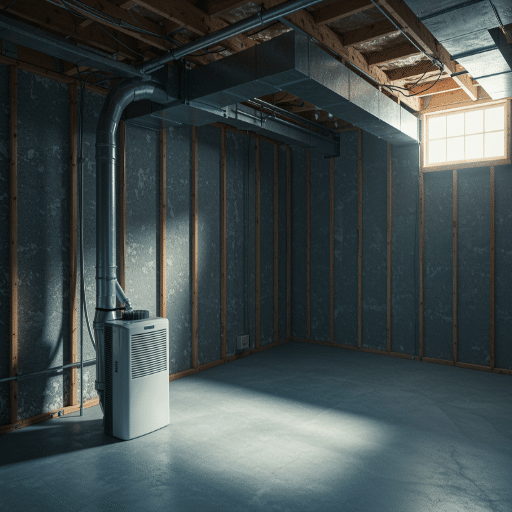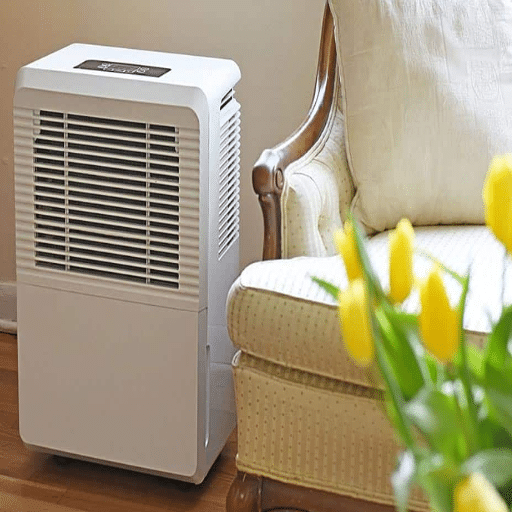To create an indoor environment that is both comfortable and healthy, it is essential to choose the right size humidifier. Dehumidifiers have different capacities, so you need to get the correct one based on factors like the space available, humidity levels in your house, and special conditions like the number of occupants. This guide will detail those essential things you should know when choosing a dehumidifier of an appropriate size for your needs. Knowing how room dimensions, moisture content, and machine functionality are interrelated empowers you to make informed decisions to control humidity effectively by improving poor air quality and mitigating hazards such as the growth of fungi, bacteria, or even molds.
What factors determine the size of the dehumidifier I need?
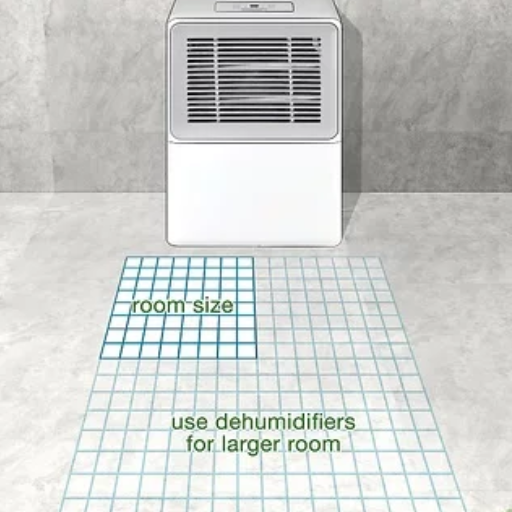
Primary two factors determine what size dehumidifier you need: the size of your room and the conditions (humidity) therein. Room size measured in square feet determines square footage coverage. At the same time, humidity levels that could be described as slight, moderate, or severe dampness establish the pints per day capacity of a dehumidifier. For instance, larger rooms with high moisture rates dictate a higher capacity device. Also, environmental factors like climate change and ventilation may affect the demands for controlling moisture; hence, it is essential to consider them when selecting dehumidifiers.
Understanding square footage and room size
Knowing the room’s square footage is essential when choosing a dehumidifier, as it affects the device’s capacity. You get the room’s total area by multiplying its length and width. Use this figure to select the recommended size of a dehumidifier. For example, a 500-square-foot room would need a lower-capacity unit compared to a basement with an area of 1,000 square feet.
In addition, larger spaces or those with high ceilings have more air volume and hence require stronger dehumidifiers. Furthermore, other factors, such as poor ventilation rates and high moisture-generating activities, must be considered before making decisions. Most manufacturers provide charts showing the standard capacity for these products, which can be very helpful during selection.
Assessing humidity levels in your home
I always begin by employing a hygrometer, an instrument built explicitly for measuring indoor humidity to evaluate humidity levels in my home correctly. Optimum humidity ranges widely between 30% and 50%, depending on the season. I also observe signs of excessive moisture, such as condensation on windowsills, musty smell, or visible growth of molds. Conversely, low humidity results in dry skin, and electric charges are necessary. Regular measures and surveying techniques make it easier to know whether adjustments like using a humidifier or dehumidifier are essential to sustain a healthy and comfortable environment.
Considering the type of space: basement vs. whole house
Various specific requirements must be fulfilled when dealing with humidity in the basement compared to a whole home. Basements can be more prone to moisture problems due to their underground nature, limited airflow, and possible water infiltration through walls/floors. They are best maintained at around 30%—50% relative humidity to avoid the occurrence of molds, which may damage structures. This often necessitates the usage of basement-specific dehumidifiers that can effectively mitigate surplus moisture.
A more integrative method is needed for whole-house humidity control. Through the HVAC system, you can have whole-house humidifiers or dehumidifiers that will balance humidity in every room. In addition, one must insulate properly, have consistent ventilation, and seal air leaks around doors and windows to maintain optimum humidity levels throughout the house. These solutions should be adapted locally, considering the particular climate and house construction, to ensure a clean and well-balanced atmosphere within the home.
How do I calculate the correct dehumidifier size for my home?
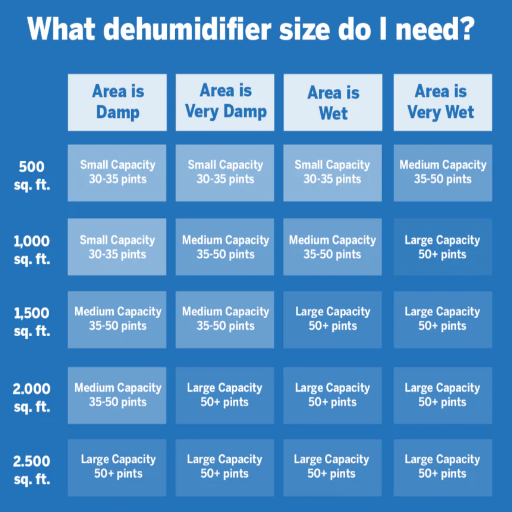
To measure the right dehumidifier size needed for your home, calculate how many square feet it includes and check out its moisture level. Firstly, measure length by width to get the total square footage of your place, then multiply these measurements (length x width). You also need to look at how bad the dampness or moisture is by classifying it as slight, moderate, or severe. Standard guides recommend using a dehumidifier sizing chart, which gives pint capacity per day required at given area sizes alongside humidity levels. For example, a 500-square-foot space with moderate dampness might require a 30-pint dehumidifier. The overall performance can be affected by factors such as air movement and other sources adding more water into the environment, so it must be considered every time.
Using a dehumidifier sizing chart
When I look at a dehumidifier sizing chart to see how effectively it will work, the first step is to find my space’s square footage and determine its moisture level. The next step is matching those two things with the chart that tells me how many recommended pints per day. For example, a model with approximately 30-pint capacity would suit a 500-square-foot area with moderate dampness. Sometimes, I might also consider other factors like poor ventilation or seasonal humidity, which may require more capacity to maintain optimum performance.
Determining capacity based on square footage
After identifying the square footage of my space, I check reliable capacity charts to know the room size corresponding to the appropriate dehumidifier capacity. For instance, normal dampness in spaces up to 500 sq ft usually requires a dehumidifier with a 20-30 pint capacity. At the same time, larger rooms or very moist climates can call for capacities of 50 pints and above. Moreover, aspects such as ceiling height and air circulation should be considered because they affect how well the dehumidifier works: this way, I choose what best meets my needs based on adequate information.
Adjusting for high humidity conditions
If it’s humid, I usually use a dehumidifier with more pints daily, which is recommended for very wet spaces. For example, most sources recommend using 70-pint dehumidifiers in places with chronic dampness, like the basement. I also place them correctly to allow airflow and observe their moisture levels all the time through a hygrometer, thus maintaining a target range of 30%- 50%. Again, this method of sealing windows and doors will help prevent the infiltration of exterior moisture, thereby increasing efficiency generally.
What are the different types of dehumidifiers and their sizes?
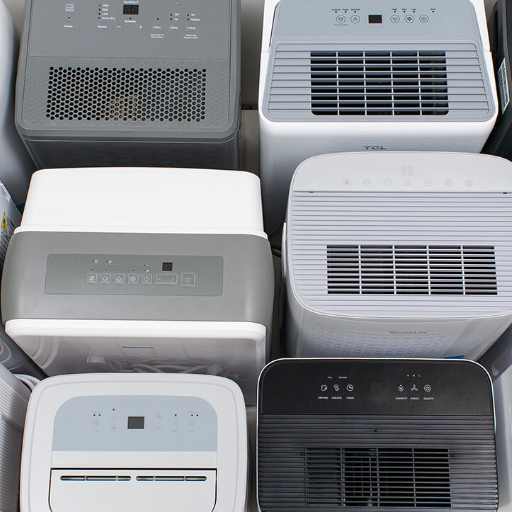
Dehumidifiers are categorized based on their functionality and intended use. The three main types are refrigerant dehumidifiers, desiccant dehumidifiers, and whole-house dehumidifiers:
- Refrigerant Dehumidifiers
These operate by cooling the air to condense and remove moisture, making them practical for warm and humid climates. They are available in sizes ranging from smaller 30-pint models for single rooms to larger 70+ pint units for basements and larger spaces.
- Desiccant Dehumidifiers
Utilizing a desiccant material to absorb moisture, these are ideal for cooler environments or spaces that require low humidity levels, such as storage areas. They typically come in various capacities suitable for both personal and industrial applications.
- Whole-House Dehumidifiers
These units are designed to integrate with HVAC systems and manage humidity for the entire home. They are typically rated in pints daily, with capacities ranging from 90 to over 130, offering coverage for large residential or commercial properties.
Proper sizing should be determined based on square footage, humidity, and specific environmental conditions.
Portable dehumidifiers: Small to large capacities
Portable dehumidifiers are versatile units that address specific room or space humidity issues. They are available in a wide range of capacities. Based on their daily moisture removal capabilities, measured in pints per day, they are typically categorized into small, medium, and large units.
- Small-Capacity Dehumidifiers (20-30 pints/day): These units are optimized for small spaces such as bedrooms, bathrooms, or closets with mild humidity concerns. They are compact, energy-efficient, and easy to move.
- Medium-Capacity Dehumidifiers (30-50 pints/day) are suitable for moderately sized rooms like living areas or offices. They balance portability and robust moisture control, handling moderate to high humidity levels.
- Large-Capacity Dehumidifiers (50+ pints/day): These models are designed for large spaces, such as basements or open-plan areas. They excel in managing severe humidity issues and are ideal for spaces prone to persistent dampness or mold growth.
When selecting a portable dehumidifier, consider factors like room size, initial humidity levels, and specific needs like noise levels or energy efficiency. Technologies such as continuous drainage options and digital humidistats enhance usability, making portable dehumidifiers a reliable choice for diverse environments.
Whole-house dehumidifiers: Sizing considerations
When deciding on the size of a whole-house dehumidifier, it is vital that you first establish the total square footage of your home and then find out the average humidity level in your house. When you have larger homes or those in high-humidity areas, these may require systems with higher moisture removal capacity, usually measured in pints per day. Connecting the dehumidifier to your existing HVAC system can influence the necessary capacity, as it should be designed to easily merge without affecting airflow or performance. For accurate sizing information, consult the manufacturer’s guidelines and seek professional assessment for optimal performance and energy savings.
Desiccant dehumidifiers: When to choose this option
These are most appropriate for areas with low temperatures and extremely low humidity levels, as they work effectively in places where refrigerant-based dehumidifiers do not perform. On the other hand, desiccant systems rely on a hygroscopic material that absorbs moisture, making them ideal for cold climates, industrial settings, or instances where very low humidity is desirable, such as electronics, drugs, or food storage. Another benefit of desiccant dehumidifiers is that they fit well in spaces without consistent heating or cooling, like basements, crawl spaces, and construction sites. It should be noted that these units typically use more electricity and have higher upfront costs; however, their functionality and reliability, especially in certain conditions, warrant the investment in the proper situation for long-term gains.
How does room size affect dehumidifier choice?
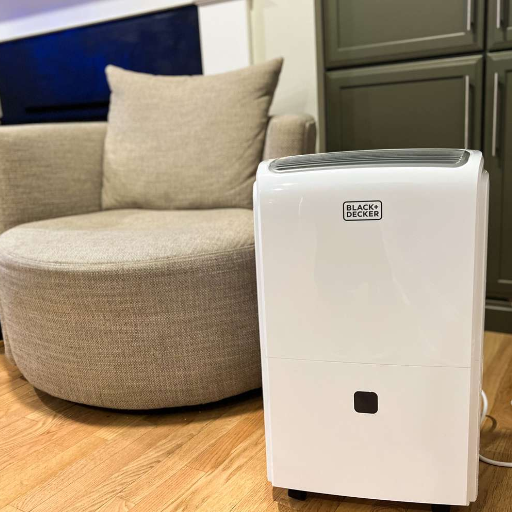
When selecting a dehumidifier capacity, one must consider room size. In large rooms, dehumidifiers with high moisture removal capabilities (usually measured in pints per day) would be needed to control humidity levels properly. For instance, a small room under 300 sq ft may only require a unit with a capacity of 20-30 pints, whereas those over 1,500 sq ft often necessitate models of 50-70 pint sizes and beyond. Choosing a machine calibrated to the square footage being served ensures the best efficiency and optimal performance whilst preventing underpowered and overpowered running.
Selecting the right size for small rooms
To buy a dehumidifier for small rooms, you must pair the device’s capability to the size of your room and its most common humidity levels. A 20-pint dehumidifier is typically adequate for spaces up to 300 square feet with average humidity. If the area has high moisture levels, such as bathrooms or basements, using a 30-pint unit could be better for maintaining the correct level of wetness. Other considerations include ceiling height, ventilation, and the presence of moisture sources like leaks or laundry areas, which may require a larger model. So, you must get one of the best humidifiers of the appropriate size to operate well, use less power, and make your home cozy.
Choosing a dehumidifier for large spaces
If choosing a dehumidifier for large areas, I advise focusing on those with capacities starting at fifty pints or higher, especially if your space goes beyond two thousand square feet. Going for Energy Star-rated options to save energy and analyze features such as continuous drainage that ease maintenance work is advisable. Additionally, airflow design and fan speed settings should be considered to obtain uniform relative humidity control throughout the area under consideration. For optimal performance, though, one must look out for how many people are occupying it, whether there are big windows or specific types of humidity issues (for instance, heavy rainfall or proximity to water).
Basement dehumidifiers: Special considerations
When selecting a dehumidifier for your basement, it is essential to pay attention to the specific features of this environment. Basements have more humidity because they have less ventilation, are more remarkable than other parts of the house, and are close to ground moisture. Therefore, ensure you settle on a model that can work at frigid temperatures, preferably with anti-frost design components, to avoid freezing internal aspects. For instance, look for a dehumidifier with below 60°F ratings, as anything above could make standard models lose efficiency or get damaged.
Based on daily pints corresponding with space and dampness levels, the basement dehumidifier’s capacity should be considered. If the basement is quite damp or occasionally experiences flooding, then it is advisable to go for high capacity (50+ pints per day). Further still, features such as built-in pumps meant for automatic water disposal and continuous drainage options will ease the maintenance or operation of these devices, especially when manual emptying of a reservoir is inconvenient.
Finally, the unit should have high-grade filtration systems for capturing allergens, dust, and mold spores that tend to build up in basements. Installing innovative features such as humidity sensors and programmable settings that accurately regulate relative humidity at 30-50% is essential to control mold growth and structural damage due to high moisture content. The best dehumidifier for your basement guarantees long-term effectiveness and a dry and healthy environment.
What size dehumidifier do I need for specific moisture problems?
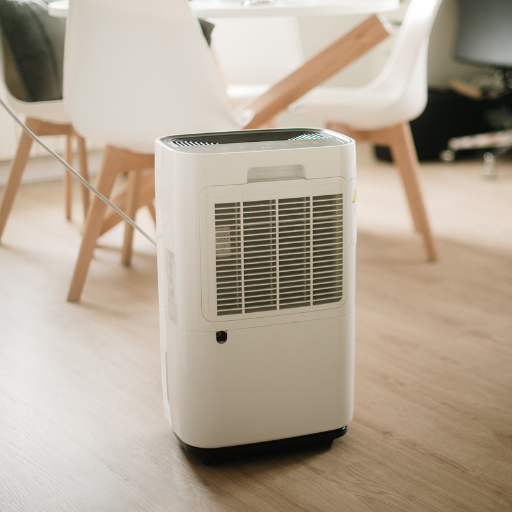
The required size of the dehumidifier will depend on how moist the air is and the area that needs to be dehumidified. The rate at which a dehumidifier can remove pints of water per day (pint/day) mainly determines its rating. For instance, for a small basement or a room with dampness, such as musty smells, you typically would need a 30-pint unit for spaces less than 1500 square feet. One should use a 50-pint unit covering up to 2000 square feet of space for very wet areas with visible condensation or little water leakage. If it is highly soaked, like places with ponding water or holes leaking heavily, then one should go for a 70-pint dehumidifier meant for big rooms that exceed 2500 square feet in size. To effectively manage moisture levels until they reach optimum levels, calls are made to evaluate the problem’s magnitude and recommend that manufacturers size it appropriately for this purpose.
Addressing minor dampness issues
To address minor dampness problems, appropriate methods should be employed to maintain a healthy environment. For slight moisture problems on windows or a moldy odor in the house, a 30-pint dehumidifier is usually enough for spaces up to 1,500 square feet. Another option is to ensure proper ventilation by installing exhaust fans in bathrooms and kitchens with a high moisture level. However, it works by stopping small leaks and improving insulation as well. Using moisture-absorbing materials such as silica gel will help control humidity. Combining these steps ensures minor dampness does not result in more severe moisture issues, thus maintaining structural integrity and indoor air quality.
Tackling severe moisture problems
Dealing with severe moisture problems requires me to concentrate on finding the origin of the issues to find a lasting solution. This often means dealing with leaky pipes, poor drainage, or cracks in the foundation. For example, we must grade our properties correctly to direct water away from foundations and have sump pumps and waterproof membranes installed or replaced as a foundational defense against water seepage. Moreover, whenever there is a worsening in the situation, I always contract professionals for mold remediation or construction repair services to preserve the integrity of both the house and indoor air quality. Steps taken in this way are necessary when resolving severe moisture-related challenges.
Sizing for flood or water damage recovery
Proper sizing for flood or water damage recovery involves assessing the affected areas, determining how bad the damage is, and selecting appropriate mitigating equipment and strategies. Begin by measuring the square footage of the impacted area; find out what kind of intrusion occurred—pooling, saturation, standing water, etc. These are vital data used in selecting the right dehumidifiers and air movers/water extraction units at all times.
A good example is large commercial spaces, which may require high-capacity industrial dehumidifiers capable of removing several hundred pints daily. At the same time, small residential areas can usually be tackled with portable units. In addition, the choice of air movers should be determined by the CFM rating required for optimal airflow during drying processes through placement strategies concentrated on walls, floors, and saturated materials. Lastly, ensure that sump pumps or water extraction vacuums are appropriately sized to handle the present water volume.
Use reference guidelines from major industry standards like IICRC (Institute of Inspection Cleaning and Restoration Certification) to ensure the correct machines have been utilized. Taking proper sizes into account and assessing damages caused by floods or waters will create a systematic plan for an effective dry-out operation.
How do I know if I need a larger dehumidifier?

A larger dehumidifier may be needed, considering various factors such as the size of the affected space, water saturation level, and environmental conditions. Bigger rooms with high humidity or substantial water damage are likelier to need dehumidifiers with higher capacities to maintain the best moisture levels. To establish whether it will still handle the moisture load, one should calculate the cubic footage of that place and go through equipment specifications. Besides, if drying times seem longer or there is always a presence of high humidity even after running continuously, you should purchase a dehumidifier with more capacity.
Signs your current dehumidifier is undersized
If your current dehumidifier is too small for its purpose, you may notice excessive humidity levels despite the constant use of this unit. Indications include persistent wet odors or a musty smell that refuses to disappear, visible condensation on windows or walls, and spreading molds. Furthermore, in case the system runs at its maximum strength but fails to dry out the room properly or takes much longer than expected timeframes to do so, it means that your house needs an additional source of moisture removal since the current one is inadequate for both area size and level of dampness given in this situation. These anomalies mean upgrading to a better-performing unit, which is also more extensive than you currently have regarding size optimization.
Benefits of investing in a larger capacity unit
If you are dealing with highly humid or damp spaces, there are many important reasons why you should consider investing in a bigger dehumidifier. With each cycle, a more capacious unit can remove more significant amounts of vapor from the atmosphere so that the drying process goes faster and becomes even more efficient. Moreover, it enhances indoor air quality by lowering the likelihood of molds and mildew formation, which may threaten human health and damage construction. In addition, unlike smaller units, such units can be operated for a long without any problem; hence, they often work with higher energy productivity rates. Furthermore, these units are designed to manage varying humidity levels over larger areas, ensuring a uniform and pleasant space inside. Lastly, after some time, maintenance costs on your dehumidification system can decrease, and your lifespan will increase if you upgrade to equipment of bigger capacity.
When to consider multiple dehumidifiers
When deliberating on various dehumidifiers, I consider the size of the area, its configuration, and the extent of water problems. One unit may not effectively distribute its effects across large spaces or multi-roomed apartments with high humidity levels and lousy air conditioning. Deploying several dehumidifiers allows me to focus on specific areas, thus enabling balanced humidity control throughout the space. This method is especially effective in the case of basements, multi-storeyed houses, or sections of a building with a particular problem for which one unit would not be enough. It improves performance and ensures that consistency in comfortable conditions is achieved all over as well as evenness in air quality levels.
What are common mistakes when choosing a dehumidifier size?
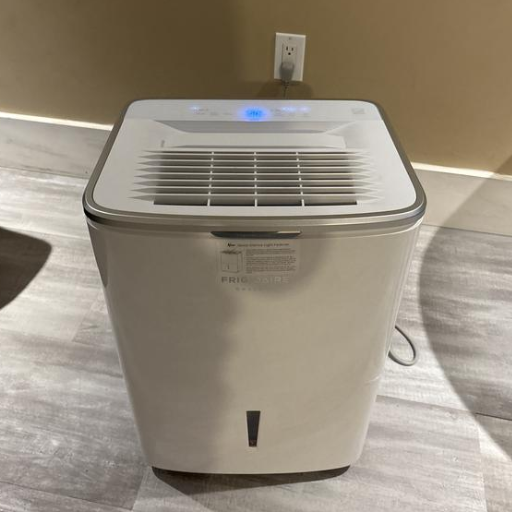
Often, a mistake occurs when an individual underrates the space’s size or capacity, leading to inadequate moisture removal and overtaxing of the unit. On the other hand, oversizing a dehumidifier can cause short cycling due to frequent on-and-off switching, which wastes power and reduces its life span. The other thing is that people forget to consider such environmental factors as humidity levels, room air movement, and the presence of more than one problem area, among other things that affect the ability of a dehumidifier to do its work well. Proper evaluation of these elements guarantees high performance and energy conservation.
Underestimating your space’s dehumidification needs
Overlooking basic things like square footage, height in feet, and humidity levels usually results in underestimating how much moisture your space requires for elimination. Spaces with taller ceilings or severe moisture-related issues will require larger dehumidifier capacities. Manufacturers’ recommendations on size alone are another trap since they disregard specific room problems such as poor ventilation, water leaks, or areas with heavy foot traffic that increase evaporation rates. This error leads to insufficiently reduced dampness, exposing you to mold growth, structural deterioration, and discomfort. Always calculate your room’s cubic footage and cross-reference it with the capacity ratings (measured in pints per day) before settling on a suitable model that meets these demands effectively.
Overlooking energy efficiency in larger units
When choosing a bigger dehumidifier, you may ignore efficiency instead of just the size. You should consider models with an Energy Star certificate from sources that matter, as they use less power without reducing performance. Since larger units have more capacity, they consume a lot of electricity. Thus, it is essential to have adjustable humidity controls and also energy-saving modes for cost-effective operation. Over time, ignoring these factors could lead to much higher bills; hence, one must consider how well the equipment performs versus its energy consumption when purchasing it.
Forgetting to factor in future needs
More so, it might be that when buying a dehumidifier, we don’t think about future needs, leading to us underestimating its usability in the long run. Your environment may change over time (weather patterns contributing to increased humidity, renovations that impact airflow, or even space expansions within your living quarters). The top industry sources indicate that purchasing a slightly bigger device allows for personalized adjustments through modern features like programmable timers, remote control, or innovative integration capabilities, preventing premature upgrades. Moreover, thinking about how the technology progresses will possibly offer enhanced energy savings or more precise control, which can cut down costs and time, respectively. To ensure its effectiveness as conditions change, plan for the adaptability of your dehumidifier.
References
Frequently Asked Questions (FAQ)
Q: How do I choose the right size dehumidifier for my home?
A: To choose the right size dehumidifier, consider the space’s square footage and humidity level. For a small space like a bedroom, a 30-pint dehumidifier may suffice. Larger areas or very damp spaces might require a 50-70 pint capacity dehumidifier. It’s also important to factor in your home’s climate and specific moisture issues.
Q: What factors should I consider when determining what size dehumidifier I need?
A: When determining the size of the dehumidifier you need, consider the following factors: room size, humidity levels, temperature, air circulation, and the source of moisture. You’ll also need to consider the area where you’ll use the dehumidifier, such as a basement or laundry room, as these spaces often require more powerful units.
Q: How does a dehumidifier work to remove moisture from the air?
A: A dehumidifier works by drawing in moist air, cooling it to condense the moisture, and then reheating the air before releasing it back into the room. The collected water is stored in a tank that needs to be emptied regularly or drained continuously through a hose. This process helps maintain optimal humidity levels in your home.
Q: What size dehumidifier do I need for a small space like a bedroom?
A: For a small space like a bedroom (typically 150-250 square feet), you may only need a 30-pint dehumidifier. However, if the room is particularly damp or humid, you might consider a slightly larger capacity unit to ensure adequate moisture removal.
Q: How do I know if I need a dehumidifier for my home?
A: You might need a dehumidifier if you notice signs of excess moisture in your home, such as condensation on windows, musty odors, mold growth, or damp spots on walls or ceilings. If you live in a humid climate or have a basement prone to dampness, investing in a dehumidifier can help prevent moisture-related issues.
Q: What’s the difference between small and large-capacity dehumidifiers?
A: The main difference is the amount of moisture they can remove daily. Small dehumidifiers typically remove 20-30 pints of moisture daily and are suitable for single rooms or small areas. Large-capacity dehumidifiers can remove 50-70 pints or more daily and are better for larger spaces, basements, or damp areas. Large units also tend to have more features and operate more efficiently.
Q: How do I choose the right dehumidifier size for my basement?
A: To choose the right dehumidifier size for your basement, measure the square footage and assess the dampness level. For a moderately damp 500-square-foot basement, a 30-pint dehumidifier might suffice. However, you may need a 50-pint or larger unit for damp basements of the same size. Always opt for a slightly larger capacity if you’re unsure, as basements often require more powerful dehumidifiers.
Q: What’s the best dehumidifier for a large, open-plan living area?
A: You’ll need a high-capacity dehumidifier for a large, open-plan living area. A 50-70 pint unit is often the best choice, as it can effectively remove moisture from a larger space. Look for models with built-in humidistats, multiple fan speeds, and energy-efficient features to ensure optimal performance and energy savings in your open-plan area.


